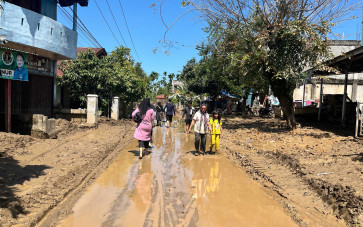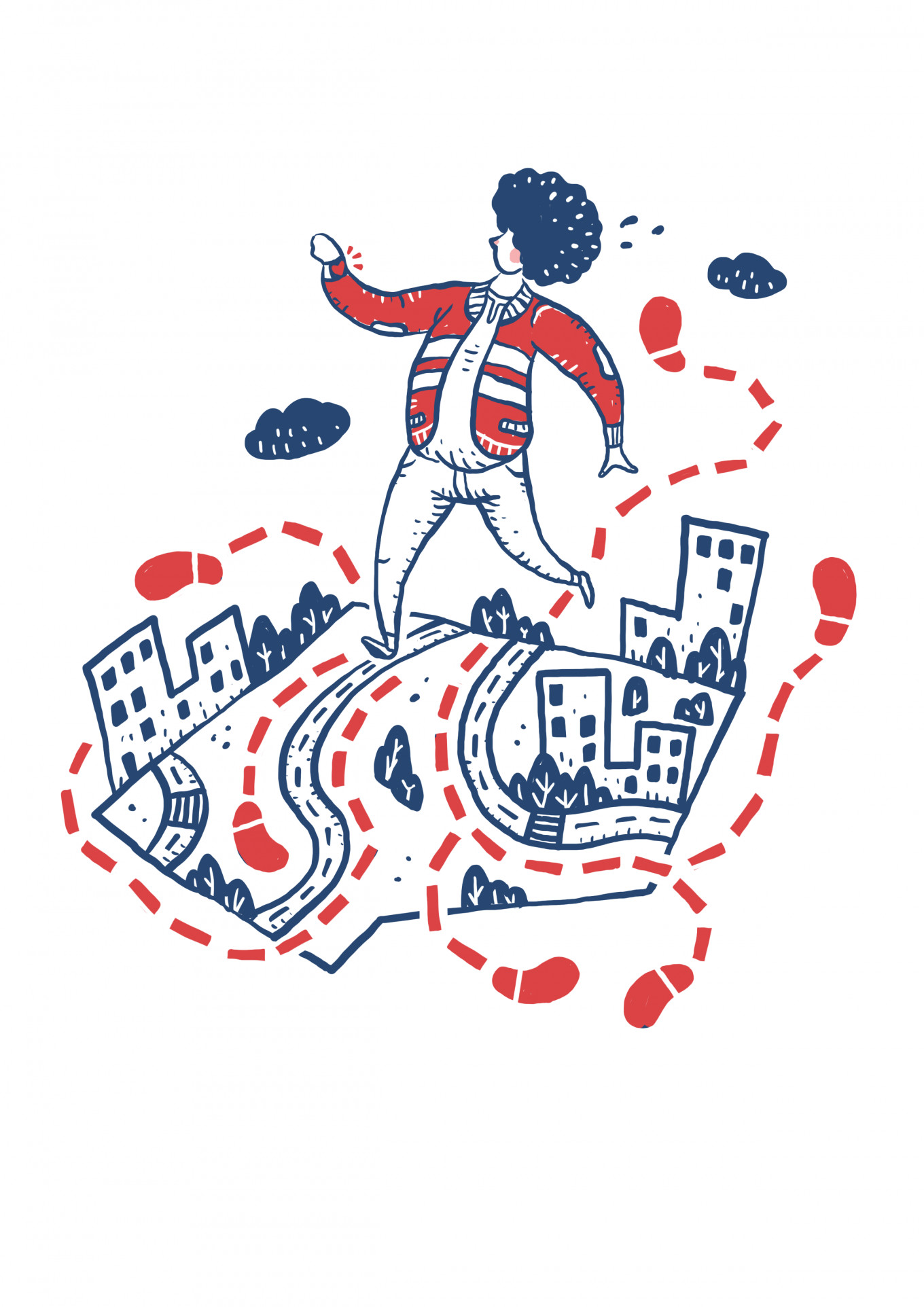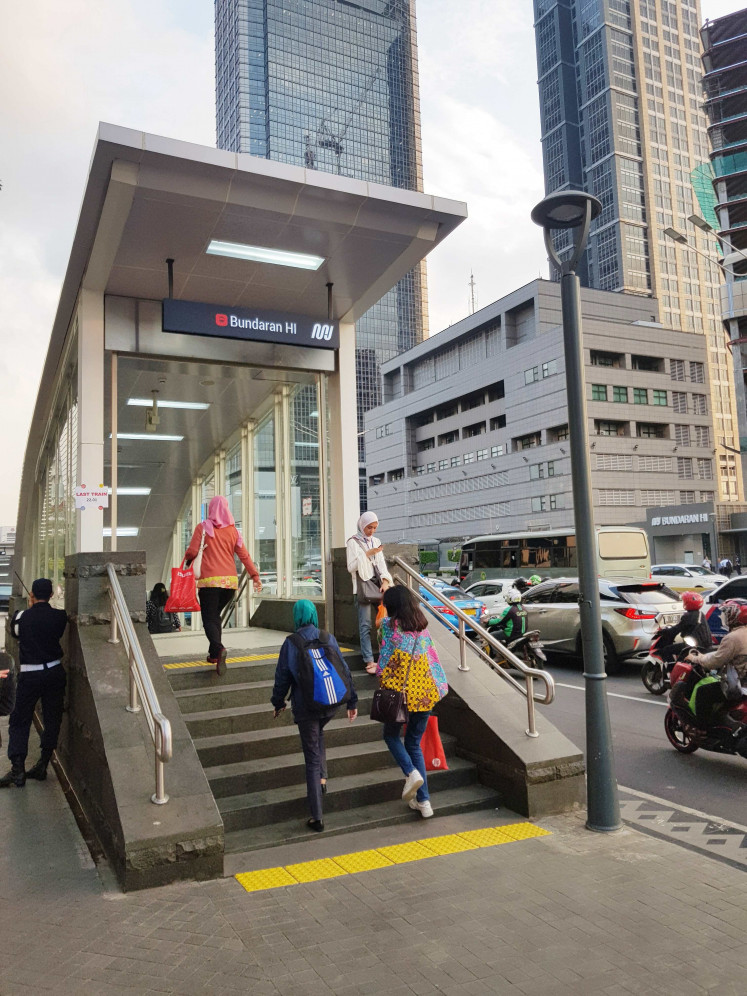Getting your smartwatch to congratulate you for reaching 10,000 steps has become a daily fitness quest for many Jakartans. But in a city where wide sidewalks are rare and cheap ojek (motorbike taxi) rides are a few taps away, completing that task every day might require advanced skills.
Without a smartwatch, counting steps can be tricky. You could use your phone, or roughly estimate that each kilometer walked adds 1,500–2,000 steps, depending on your stride.
But this raises a question: Do we really need to hit that 10,000-step mark?
We can agree to disagree on the numbers. According to Harvard professor I-Min Lee, 7,000–8,000 steps a day is the sweet spot, enough to improve health and longevity. For me? My doctor recommends at least 20 minutes of walking daily, though knowing myself, I set a manageable 5,000-step goal on my Apple Watch.
Hitting 10,000 steps a day in Jakarta involves navigating the city's unique challenges.
But even these more realistic goals can be challenging in a city not built for walking, where residents are more often found sitting in a car, on the back of a motorcycle or behind a desk than on their feet.

Thank you!
For signing up to our newsletter.
Please check your email for your newsletter subscription.
Despite these hurdles, Jakartans have managed to find ways to make it happen. It all comes down to two questions: Where? And how?
Mall marathons
It shouldn't come as a surprise that most answered with Jakarta’s favorite pastime: going to the mall.
For residents down south, the massive Pondok Indah Mall (PIM) tops the list as the go-to walking destination. I can vouch for that; last week, I spent two hours walking around PIM and easily racked up 6,000 steps.
PIM is not the only option, of course, as Jakarta has many megamall complexes to choose from.
(Shutterstock)
For those who live in the east and north, “Mal Kelapa Gading is the way to go. It has four parts, plus La Piazza,” said Disna, 34.
Lucky for him, he works at the Senayan City office complex, so hitting the steps can easily be part of his routine.
“Walk from the LG floor to the 6th [floor] of Senayan City twice and visit some stores along the way; you’ll easily hit 6,000 steps.”
Daily commute
The “how” is another matter entirely.
It’s no secret that residents of cities with efficient public transport systems get to put in more steps each day just by walking to and from stations. Those with homes or destinations near train or bus stations in Jakarta have discovered this hack as well.
Arya, 32, walks from Lotte Avenue to the MRT at Bendungan Hilir and steps off at Istora Senayan.
“If I have more time, I get off at SCBD. On the return trip, I can hit 11,000 steps, though I don’t think I could manage this every day,” she says.
One hack to getting in more steps is to walk to and from train or bus stations. (AsiaTravel/Shutterstock)
On weekends, Sandy, 33, takes the LRT or MRT to Dukuh Atas, and then walks to Grand Indonesia or Plaza Indonesia.
“From Tebet, walking to the LRT Rasuna Said gets me 2,000 steps, and from Dukuh Atas to Grand Indonesia adds another 2,000,” he says.
“The return trip alone gets me 8,000 steps, and I add more from the mall walk.”
Outdoor effort
For suburbanites with more time to spare, there are other options; ones with fresh air instead of air conditioners.
Sandy says if he gets tired of the malls, he goes to nearby parks like Taman Menteng, Situ Lembang or Suropati.
Wulan, 35, who lives in the Bintaro area, recommends the Bintaro Loop.
“Most people run there, not walk, but a full loop will get you close to 10,000 steps,” he says, adding that it’s sad most of the usual routes are just malls.
Kezia, 30, also suggests Nava Park Botanic Garden in BSD in Tangerang.
“I think two laps will get you to nearly 10,000 steps. Or try Alam Sutera Loop! You can hit 10,000 steps by circling the loop once, and the air is much better than in BSD or anywhere [else] in Jakarta.”
Get creative
With our busy lives, squeezing in those steps often requires more effort and extra creativity.
Fadhila, 31, has an extra tip for you: mix things up to adapt to your schedule each day, but always make the time.
“I usually walk around my neighborhood for 30-45 minutes in the morning or spend 30 minutes on the treadmill. Or, if I can’t, I spare some time after work to walk,” she says.
“My favorite route is from my office in Thamrin toward Sudirman, then to the World Trade Center complex and then to ITC Kuningan. It’s well-lit and busy, which makes it safe for women, and it gets me to about 3 km,” she says.
Her two other alternative routes are Thamrin to Imam Bonjol road in Menteng, then to Metropole cinema, or from Thamrin to Manggarai to Kurasu coffee shop in Menteng. Both routes are more on the quiet side and not as busy as her first option.
For some, like Siska, 49, personal motivations drive their walking.
“I walk from my home in Cinere to TPU Pondok Labu to visit my father’s grave twice a week. It’s getting harder with the heat, but this route gets me more than 9,000 steps, and then I just need to add a bit more before reaching home.”
I guess in the end, hitting 10,000 steps a day in Jakarta isn’t just about fitness; it’s about navigating the city’s unique challenges and finding little moments of movement in the midst of daily routines.
While some of us may reach that magic number every day, for many, it’s about making the most of what we can do.
After all, as they say, every step counts.
Adelia Anjani Putri, a communications consultant and former reporter, has found herself writing again. She’s also exploring a career shift that would let her pursue her passions for cooking and catsitting—ideally with a paycheck.

























